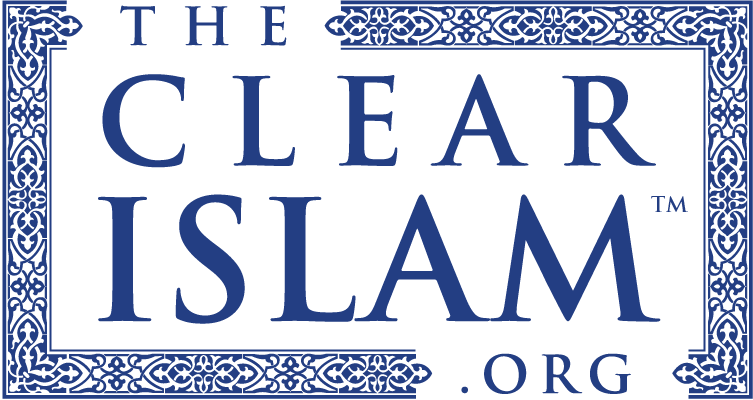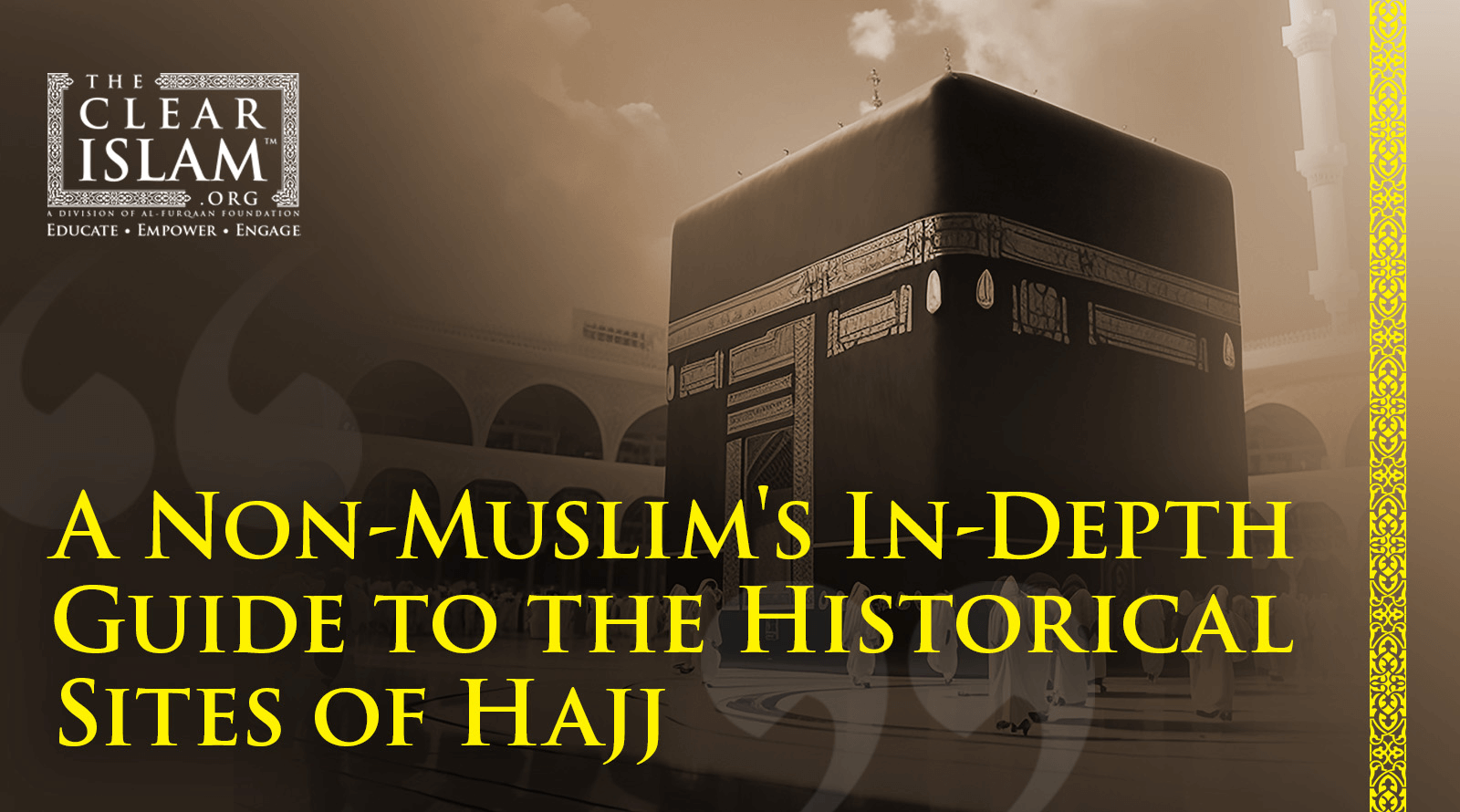Introduction
Hajj, the annual pilgrimage to Mecca, is a journey that takes pilgrims through some incredible historical sites. It is also a mandatory religious duty for all Muslims who are physically and financially capable. Every year, millions of Muslims visit these landmarks, following the steps of the Prophet Muhammad (PBUH) and connecting with their faith. During some of these sites, pilgrims also participate in rituals that commemorate the acts of devotion by the Prophet Ibrahim (Abraham) and his family. For non-Muslims, exploring these historical sites along the Hajj route, and learning more about these specific rituals (obligatory and recommended), offers a fascinating glimpse into Islamic traditions and history. This guide highlights these key locations, providing an inside look at the rich legacy and significance of these sacred places from Mecca to Medina.
Mecca, the Starting Point
Mecca, the holiest city in Islam, is the birthplace of Prophet Muhammad (PBUH) and the focal point of the Hajj pilgrimage.
Kaaba and Masjid al-Haram
At the heart of Mecca lies the Kaaba, a cube-shaped structure draped in black cloth, which Muslims around the world face during their daily prayers.1 The Kaaba is housed within the Masjid al-Haram, the Grand Mosque, which is the largest mosque in the world. According to Islamic tradition, the Kaaba was built by Prophet Ibrahim (Abraham) and his son Prophet Ismael (Ishmael) as a house of monotheistic worship. During Hajj, pilgrims perform Tawaf, circling the Kaaba seven times in a counterclockwise direction, expressing the unity of the believers in the worship of the one God.
Zamzam Well
Adjacent to the Kaaba is the Zamzam Well, a reserved water source with a history dating back to the time of Prophet Ibrahim (Abraham). According to the narration, the well sprang forth miraculously to provide water for his wife Hajar (Hagar) and her son Ismail (Ishmael), who were stranded in the desert. Pilgrims drink from the well, believing in its healing properties and its significance as a symbol of divine providence.2 3
Mount Safa and Marwah
Another important ritual during Hajj is the Sa’i, which involves walking seven times between the hills of Safa and Marwah, located within the Grand Mosque. This practice commemorates Hajar’s (Hagar) desperate search for water for her son Ismail (Ishmael). Her faith and perseverance are honored by this symbolic act of devotion.
Mina: The Tent City
Mina, situated approximately 8 kilometers from Mecca, transforms into a sprawling tent city during Hajj. Pilgrims stay in Mina for several days, engaging in prayer and reflection.
The Stoning of the Devil (Ramy al-Jamarat)
One of the key rituals performed in Mina is the stoning of the Jamarat, which symbolizes the rejection of evil. Pilgrims throw pebbles at three stone pillars, reenacting Prophet Ibrahim (Abraham)’s defiance of Satan’s temptations.4 This act serves as a powerful reminder of the constant struggle against sin and the importance of steadfast faith.
Arafat: The Pinnacle of Pilgrimage
The Day of Arafat is the peak of the Hajj pilgrimage, and this highly important day is dedicated to deep prayer, reflection, and seeking forgiveness from God. Pilgrims gather at the Plain of Arafat, where they stand in devotion from noon until sunset, recognizing this day as a profound spiritual experience. At the heart of Arafat stands Mount Arafat, also known as Jabal al-Rahmah (the Mountain of Mercy), where Prophet Muhammad (PBUH) delivered his farewell sermon, emphasizing key principles like justice, equality, and the unity of the Muslim community. This site holds immense significance as it marks the culmination of Hajj and serves as a moment of spiritual renewal for all who participate.
Muzdalifah: The Sacred Gathering
After leaving Arafat, pilgrims journey to Muzdalifah, an open plain situated between Arafat and Mina, where they spend the night under the open sky. In Muzdalifah, pilgrims collect pebbles that will later be used in the stoning ritual in Mina, symbolizing the rejection of evil. They also perform the Maghrib (sunset) and Isha (night) prayers together, reflecting the unity and communal spirit that are central to the Hajj pilgrimage, as they prepare for the next phase of this sacred journey.
Medina: A Highly Recommended Visit
Although not a formal part of the Hajj rituals, visiting the sacred sites in Medina after completing Hajj is highly recommended for Muslims. This journey allows them to deepen their spiritual connection by visiting significant places such as the Prophet’s Mosque, where the Prophet Muhammad (PBUH) is buried, and other historical sites that played crucial roles in early Islamic history. These visits offer an opportunity for reflection and a deeper understanding of the life and teachings of the Prophet, further enhancing the spiritual experience of the pilgrimage.
Masjid an-Nabawi (The Prophet (PBUH)’s Mosque)
In Medina, the Prophet (PBUH)’s mosque stands as a significant site. It was built by the Prophet Muhammad (PBUH) himself and is the second holiest mosque in Islam. The mosque houses the tomb of the Prophet (PBUH), along with the graves of his closest companions, Abu Bakr and Umar. Visiting this mosque is a deeply spiritual experience for Muslims, as they pay their respects to the Prophet (PBUH) and reflect on his teachings.
Quba Mosque
The Quba Mosque, located on the outskirts of Medina, holds the distinction of being the first mosque built by the Prophet Muhammad (PBUH). Its historical significance is immense, and it is considered a place of great blessings. Pilgrims and visitors to Medina often make it a point to visit this mosque.
Al-Baqi Cemetery
Al-Baqi Cemetery, situated near the Prophet (PBUH)’s mosque, is the resting place of many of the Prophet (PBUH)’s family members and companions. It is a site of reverence and historical importance, reflecting the early days of Islam and the people who played a pivotal role in its establishment.
Understanding the Cultural and Religious Context
Hajj is more than just a religious obligation; it is an important expression of Islamic faith and unity. For non-Muslims, understanding the rituals and historical context of Hajj can foster greater appreciation and respect for Islamic traditions. It also highlights the universal values of faith, perseverance, and community that are central to the pilgrimage.
Are You Letting Ignorance Win? Donate Now to Clear Islam and Support Street Dawah!
Don’t stand on the sidelines while misinformation and ignorance about Islam continue to spread! It’s time to take action. Your donation to The Clear Islam and our Street Dawah efforts is not just appreciated – it’s crucial. This isn’t about spreading awareness; it’s about combating prejudice and fostering understanding in our communities. Every dollar you give helps us educate, enlighten, and break down barriers of misunderstanding. Don’t let ignorance prevail – contribute now and be a part of the change we desperately need.
Conclusion
The Hajj is a deeply spiritual and transformative experience that takes place primarily in Mecca, with optional visits to Medina afterward. By exploring the significant sites associated with Hajj, both in Mecca and Medina, non-Muslims can gain a richer understanding of Islamic history and the profound meaning behind this sacred pilgrimage. Embracing this knowledge fosters interfaith dialogue, mutual respect, and a greater appreciation for the diverse tapestry of human beliefs and practices.
Suggested Reads:
- Muslims face the Kaaba during prayer as a symbol of unity and direction in worship. Facing the Kaaba, known as the qiblah, symbolizes the unity of Muslims worldwide, as they all turn towards the same direction in their prayers, regardless of where they are in the world. This practice was established by the Prophet Muhammad (PBUH) after a revelation from God, instructing the Muslim community to change their prayer direction from Jerusalem to the Kaaba. This act not only signifies the connection to the sacred history of the Kaaba but also reinforces the concept of monotheism in Islam, as the Kaaba is a house dedicated solely to the worship of Allah. ↩︎
- There are many miracles and benefits to the water located in the Zamzam Well (Zamzam water). Despite being thousands of years old and serving millions of pilgrims annually, the Zamzam Well has never dried up. This continuous flow is considered miraculous, especially given the arid desert environment of Mecca. Further, scientific studies have shown that Zamzam water has a unique mineral composition that sets it apart from other water sources. It is rich in calcium and magnesium, which may contribute to its perceived health benefits. Additionally, it is free from microbial contamination, which is considered remarkable given the well’s age and constant use. ↩︎
- Hassan, Abed Sultan, and Nadia Abd Ellatif Ali. “Zamzam Water Surpasses Global Standards in Quality and Mineral Content.” Zamzam Water Surpasses Global Standards in Quality and Mineral Content | Academia Open, Academia Open, 24 May 2024, acopen.umsida.ac.id/index.php/acopen/article/view/8943/2208. ↩︎
- According to Islamic tradition, when Prophet Ibrahim (Abraham) was commanded by God to sacrifice his son Isma’il (Ishmael), Satan appeared three times to dissuade him from obeying God’s command. Each time, Prophet Ibrahim resisted Satan’s temptations by throwing stones at him, symbolizing his unwavering faith and submission to God’s will. The reenactment of this event during Hajj serves as a powerful reminder for pilgrims to resist the temptations of evil and remain steadfast in their faith.
↩︎



